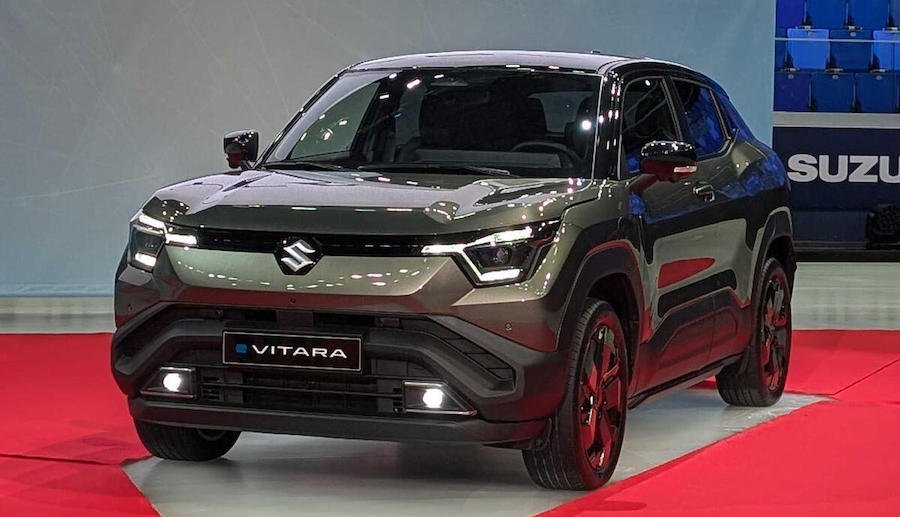2025 Suzuki e Vitara Breaks Cover, Japanese Automaker's First EV Hails From India

First and foremost, e Vitara is a different animal from the internal combustion Vitara. It's underpinned by a new platform developed with the help of Toyota and the folks at Daihatsu, said platform being called HEARTECT-e. It's not clear how much of this architecture is derived from the internal combustion-only HEARTECT, which rolled out in 2014 with the Suzuki Alto and mechanically similar Mazda Carol kei cars for Japan's domestic market.
Applications further include subcompacts (think Swift) and compacts (think XL6 for India). From the standpoint of exterior dimensions, the all-new e Vitara is longer and wider than its gasoline-fueled sibling. Suzuki quotes 4,275 millimeters (168.3 inches) in length, 2,700 (106.3) for the wheelbase, and 1,800 (70.9) in width compared to 4,175 (164.4), 2,500 (98.4), and 1,775 (69.9) for the Dacia Duster-rivaling Suzuki Vitara.
To be produced by Suzuki Motor Gujarat, the e Vitara will go on sale in India, Europe, and Japan sometime during the summer of 2025. Previewed by the eVX concept from the 2023 Auto Expo motor show in India, this fellow is front-wheel drive by default and all-wheel drive by choice. Battery options include a base 49-kWh pack for the 2WD model, whereas the optional 61-kWh pack is compatible with both front-wheel drive and a dual-motor setup.
The dual-motor option is called ALLGRIP-e, with the rear drive unit generating 48 kilowatts compared to 128 for the front unit. That's 65 and 174 metric ponies, respectively, meaning 64 and 172 mechanical horses. Peak torque is estimated at 189 Newton-meters for the front drive unit and 300 Newton-meters for both, namely 139 and 221 pound-feet of twist.
Pretty good numbers for a small crossover, but looks can be deceiving. Those battery packs weigh a lot, which is why the e Vitara tips the scales at 1,702 kilograms (3,752 pounds) in its lightest form. By comparison, the Vitara Hybrid (1.4-liter turbocharged inline-four mild hybrid) weighs 1,255 kilos (2,767 pounds).
As per the attached release, Suzuki decided on lithium-iron phosphate batteries for this application for safety and reliability. Truth be told, the LiFePO4 chemistry has a lower energy density and is cheaper per kilowatt hour than lithium-ion batteries. Moving on to the ALLGRIP-e system, the independent electric axles feature a so-called Trail mode that mimics a limited-slip differential.
More specifically, the system is programmed to brake a spinning wheel and channel drive torque to the opposite wheel. Speaking of which, the front-drive e Vitara ships with 225/55 R18 rubber. The highest you can go from the factory is 225/50 by 19 inches.
In addition to the e Vitara, a battery-electric Jimny is on the horizon as well. Unfortunately, the Japanese automaker didn't say a word in regard to when the e Jimny will premiere.
